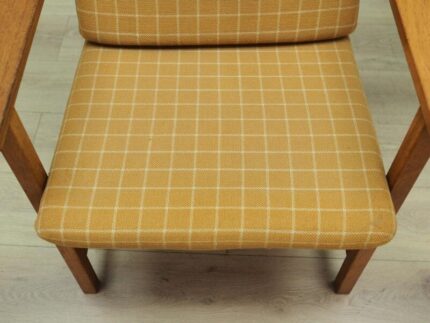Study for decorative panel
Pencil and watercolor on paper mounted on paperboard
Measures: 62.5 x 74 x 5 cm (with frame)
50.5 x 62 (without the frame)
Signed in the circle lower right
Born near Glasgow in Scotland, Walter Shirlaw settled with his family in New York in 1841, when he was two or three years old. As a young boy, he took night classes at the National Academy of Design, and first exhibited his work there in 1861. The first years of his career were spent as an engraver at the American Bank-Note Company, while at the same time attempting to establish himself as a painter.
He later moved to Chicago, where he continued to work as an banknote engraver and also taught art at the Chicago Academy of Design. In 1870, at the relatively late age of thirty-two, Shirlaw travelled to Europe to study. Prevented from settling in Paris by the Franco-Prussian War, he instead studied in Munich, where he joined the small group of American painters working in the city, including Frank Duveneck and William Merrit Chase.
Shirlaw enrolled at the Akademie der Bildenden Künste, where his teachers included Alexander von Wagner, and remained in Germany for seven years. It was while he was studying in Germany that he produced his first significant painting, Tuning the Bell, which received a medal at the Centennial Exposition in Philadelphia in 1876. This was soon followed by his best-known work; the Sheep Shearing in the Bavarian Highlands. Arguably his masterpiece, the painting was exhibited in Munich in 1876, in New York the following year, and in Paris the year after that, and is today in the collection of the Saint Louis Museum of Art.
Together with Chase, a fellow graduate of the Munich Akademie, he helped to popularize the principles of the Munich School, pioneering a more realistic style of painting, characterized by direct modelling, heavy and quickly sketched brushstrokes, and a darker colour palette. In 1877 Shirlaw was one of a group of young artists who, dissatisfied with the conservatism of the National Academy, established the Society of American Artists, of which he served as the first president. A large exhibition of his work was held in a gallery in Boston in 1880. As a draughtsman, Shirlaw worked in pastel, watercolour, chalk and pencil. As a contemporary article on the subject of Shirlaw’s drawings noted, ‘both pencil sketches and charcoal studies illustrate the artistic freedom which usually characterize the work of this accomplished painter.’ Another critic noted in particular of his drawings for illustrations, ‘Shirlaw illustrates like a painter and an artist, and he therefore gets a fulness out of, and gives a richness to a subject, not characteristic of the average illustrator. His drawings have tone, depth, and sense of construction; they show the intelligent observer and the skill of the practised student. The salient point of the subject is well understood, and expressed with effect, often with much picturesqueness and dramatic force.
A very similar drawing to this watercolor study is presented at the Smithsonian American Art Museum (object number 1930.12.47).
-
Dimensions:Height: 62.5 in (158.75 cm)Width: 74 in (187.96 cm)Depth: 5 in (12.7 cm)
-
Style:Art Nouveau(Of the Period)
-
Materials and Techniques:PaperHand-PaintedPainted
-
Place of Origin:United States
-
Period:1860-1869
-
Date of Manufacture:19th Century
-
Condition:FairWear consistent with age and use. small spots in the lower part of the drawing.
-
Seller Location:Bruxelles, BE
-
Reference Number:Seller: LU6666231751522
































Reviews
There are no reviews yet.